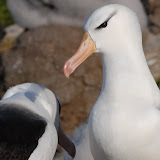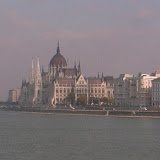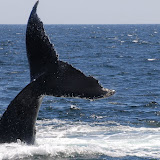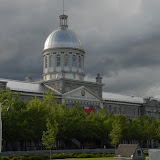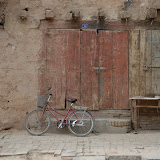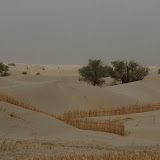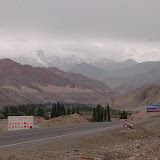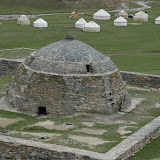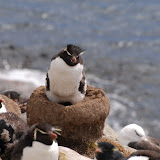When the snow lies deep and crisp and even across Oxfordshire, it’s a good clue that it’s time to head south. I headed pretty much as far south as I could get on a direct air link from Oxfordshire specifically to the Falkland Islands flying on the MoD air-bridge with a brief stopover in the Ascension Islands. After trudging through deep snow at RAF Brize Norton it was rather pleasant to get to spend a couple of hours sitting in the sun on the ‘Transit Patio’ on Ascension Island before flying on south to Mount Pleasant near Stanley.
The Falkland Islands aren’t (at any time of year) as warm as Ascension but it was a very pleasant 16-18 C in mid February – and on most days the sun shone and the wildlife was amazingly accessible. I never visited anywhere where the birds are so co-operative. Many centuries of seclusion from ground-based predators has made the birds, particularly, easy to see. Back in the North I rather expect any passing snipe to either hide in the undergrowth completely or at very least to disappear into the distance at the slightest provocation – with the magellanic snipe I encountered on Sea Lion Island their idea of an evasive manoeuvre was to jump about 2 feet then carry on feeding.
I spent a total of 11 day in the Falklands – three days on Saunders Island, four days on Sea Lion Island and the rest based in Stanley.
I was fortunate to get to spend my time on Saunders staying at the Cabin at the Neck – a magical place to stay within sight and sound of gentoo, magellanic and king penguin colonies and very close to a rockhopper penguin and black-browed albatross colony. There is also a huge elephant seal colony just a few miles up the coast on the appropriately name Elephant Point. The guide books suggest that the Cabin is going to be pretty primitive, but they’re out of date! These days the Cabin has hot and cold running water, central heating and mains electricity – I’ve lived in worse. I wouldn’t hold out much prospect for Room Service though the nearest other buildings are 10 miles away (which here equates to an hour in a Land-Rover – the vehicle of choice for most people in the Islands).
After Saunders I travelled by FIGAS (Falklands Island Govt Air Service) down to Sea Lion Island on the southern edge of the Falklands. This was the first time I’ve stayed at a hotel with an airstrip but no car park. Sea Lion was major change from Saunders – it feels less remote and rugged but in fact it’s much less disturbed than Saunders Island and still has lots of the tussac grass that once covered most of the Falklands – this provides shelter for lots of smaller birds as well for a few larger mammals such as sea lions (you’d expect that given the name of the island) and elephant seals. Neither of these animals take kindly to being stepped on – and they’re both impressively large with lots of teeth and in the case of the elephant seals spectacularly bad breath.
The bird-watching on Sea Lion is something I’ll remember for a very long time, and the undoubted highlight was lying on the beach just after dawn as the gentoo penguins came to investigate the new arrival on the sand. Having established that I wasn’t good to eat they opted simply to stand watching me watching them – wildlife photography with a wide-angle lens is a whole new experience.
The other real characters on both Saunders and Sea Lion Island are the Striated Caracaras – one of the world’s rarer birds of prey (except on the Falklands). These birds are very confident and incredibly curious (a combination which probably explains their rarity) – they will attempt to carry off a substantial camera bag should the opportunity arise and they are well able to move a heavy bag even if they can’t get off the ground with it. This strength is put to rather better effect (from the caracara’s perspective) at other times by pulling the heads off penguins!
Back in Stanley I had the opportunity to visit a major King penguin colony at Volunteer Beach – this is described as being the most accessible King Penguin colony in the world – which meant that it required a hour on gravel roads, then 90 minutes in a Land-Rover with a very good driver to reach the colony (all assuming you’ve already got to Stanley). I had a wonderful couple of hours at the colony and on the beaches nearby before the crowds descended! My guides (Arlette Bloomfield from Falkland Islands Holiday and Tony Smith from Discovery Falklands) had wisely advised that I needed get to the colony as early as possible before the cruise ship crowds arrived – they were absolutely right. The guidance I’d been given about keeping your distance from the penguins and waiting until they came to you clearly hadn’t sunk in with at least some of the cruise ship passengers. What’s the penalty for harassing a penguin?
The Falkland Islands are now firmly on the cruise ship itinerary – there are economic benefits to the Islands in this but there are downsides too. A big cruise ship can easily double the population of Stanley when it arrives and completely transforms the town – local advice was to either leave town or stay in doors. In addition to this any attempt to get significant numbers of people to a site such as Volunteer Beach is clearly going to be problematic. As we drove to Volunteer Beach it was clear how much damage had been done by 4x4’s to the ground between the road end and the penguin colony. On the day I visited the colony there were well over 40 vehicles parked up near the beach and something like 120 or 130 people milling about amongst the penguins – I can’t see how this is sustainable!
My first trip to the Falklands was a fantastic experience – at one time (many years ago) it was just somewhere in the South Atlantic where we fought a minor war, for me it’s now THE place to go and see, hear and photograph a fantastic range of wildlife. The only real question that remains – on my next trip do I revisit Saunders and Sea Lion Islands or do I make time to get to some of the other 700 islands?
I’ve put together three collections of photos from this trip – a small selection from the vast number of images I took.
The first set will I hope give an impression of what the Falklands Island is like at this time of year (early autumn in the southern hemisphere).
The second set is a collection of penguin pictures from Saunders and Sea Lion Islands and Volunteer Beach.
The third set is my attempt to put together an illustrated bird-list for the trip – there are 37 different species shown here. I saw a few more but they didn’t hang around for long enough to be photographed!
A word about logistics – I organised this trip through Falkland Island Holidays in Stanley who sorted out all my local flights with FIGAS, the accommodation throughout the trip and even my ‘meal packs’ on Saunders Island. I sorted my MoD airbridge flights with the Falkland Island Government Office in London. On Sea Lion Island I stayed at Sea Lion Lodge, and my chauffeur and guide to get to Volunteer Beach was Tony Smith of Discovery Falklands.
Useful URLs
Falkland Islands Holidays
www.falklandislandsholidays.com Falkland Island Government Office
www.falklands.gov.fk Sea Lion Lodge
www.sealionisland.com Discovery Falkland
www.discoveryfalklands.comFalklands Conservation
www.falklandsconservation.com



